Charles M. Kozierok The TCP-IP Guide
Подождите немного. Документ загружается.

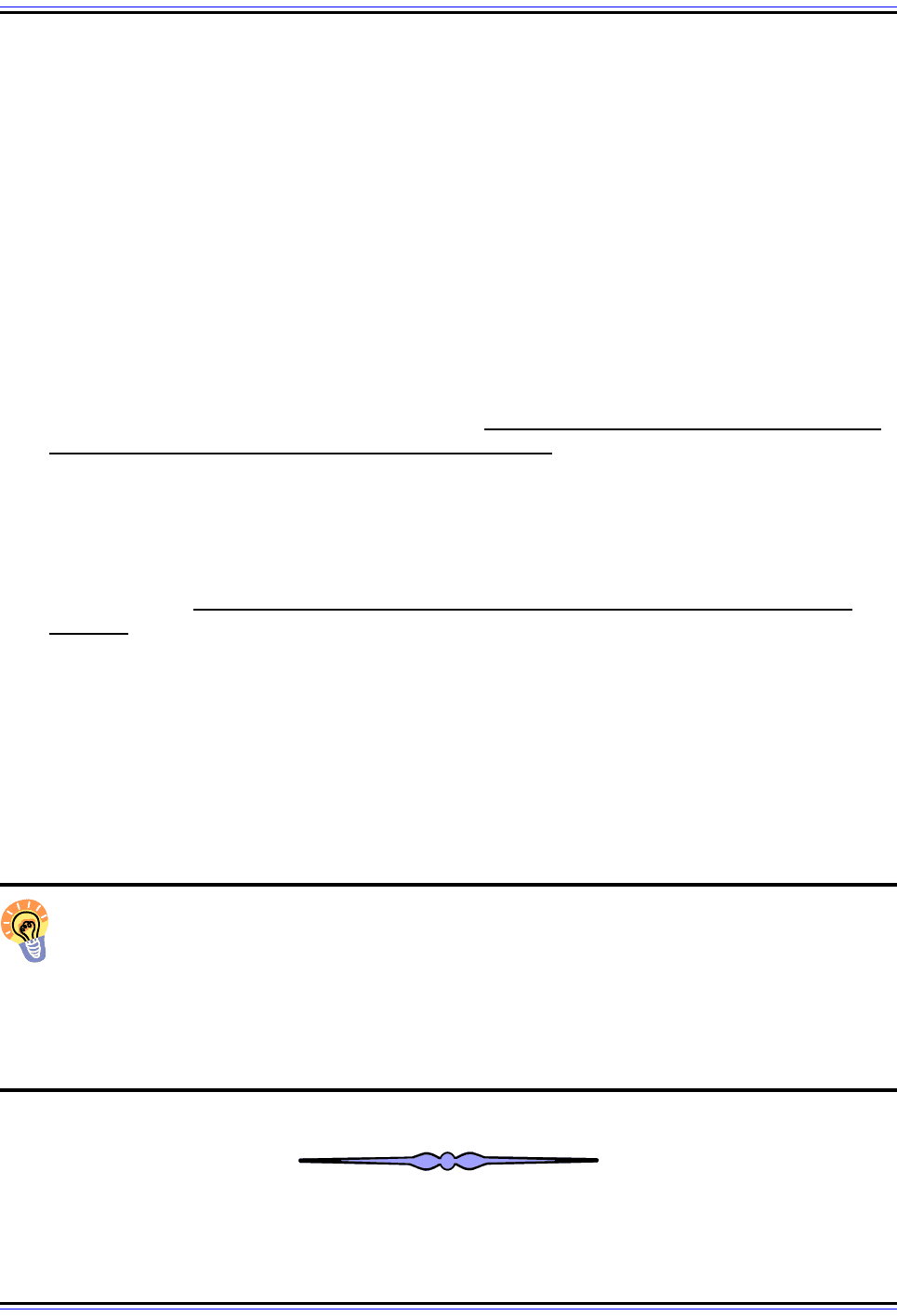
The TCP/IP Guide - Version 3.0 (Contents) ` 1241 _ © 2001-2005 Charles M. Kozierok. All Rights Reserved.
The first version of the SNMP Framework, SNMPv1, included the first formal definition of
the SNMP Protocol, in RFC 1067 (later revised by RFCs 1098 and 1157). This standard
refines the protocol operations given in the SGMP document. It makes the operation of the
SNMP Protocol fit into the overall SNMP Framework, working with formally-defined MIB
objects.
SNMPv2 and the Division of SNMP into Protocol Operations and Transport Mappings
When SNMPv2 was created, the single document describing the SNMP Protocol was split
into two standards, to make the protocol more modular and better reflective of the layers
used in internetworks. This division has been maintained in SNMPv3 as well. The two types
of documents specify the following:
☯ Protocol Operations: The first document of the pair describes the actual mechanics
by which MIB objects are moved between SNMP devices using particular SNMP
message types. In SNMPv3 it is RFC 3416, Version 2 of the Protocol Operations for
the Simple Network Management Protocol (SNMP). When people talk about just “the
SNMP standard”, this is the document they usually mean.
☯ Transport Mappings: The second document details how the SNMP protocol opera-
tions described in the first standard above can be transported over a variety of different
protocol suites. By using the correct mapping, SNMP operations can be carried out
using lower-layer technologies other than IP. This standard is represented in SNMPv3
by RFC 3417, Transport Mappings for the Simple Network Management Protocol
(SNMP).
I discuss transport mappings in a little more detail in the topic on SNMP messaging, but
since IP/UDP is by far the most common transport mechanism, there isn't a great deal to
say about that aspect of the SNMP Protocol. The focus of most of our look at SNMP will
concentrate on SNMP protocol operations: what messages are used, how they are struc-
tured and how they are exchanged. In examining these messages we will see the two main
ways that information exchanges occur in SNMP (by polling and by interrupt) and also
discover how the SNMP Protocol works with MIB objects.
Key Concept: The actual mechanism used to communicate management infor-
mation between network management stations and managed devices is called the
Simple Network Management Protocol, which may be called the SNMP Protocol to
differentiate it from the SNMP Framework. It consists of a number of protocol operations
that describe the actual message exchanges that take place between devices, and a set of
transport mappings that define how these messages are carried over various types of inter-
networks. The Internet Protocol is the most common transport mapping used for SNMP.
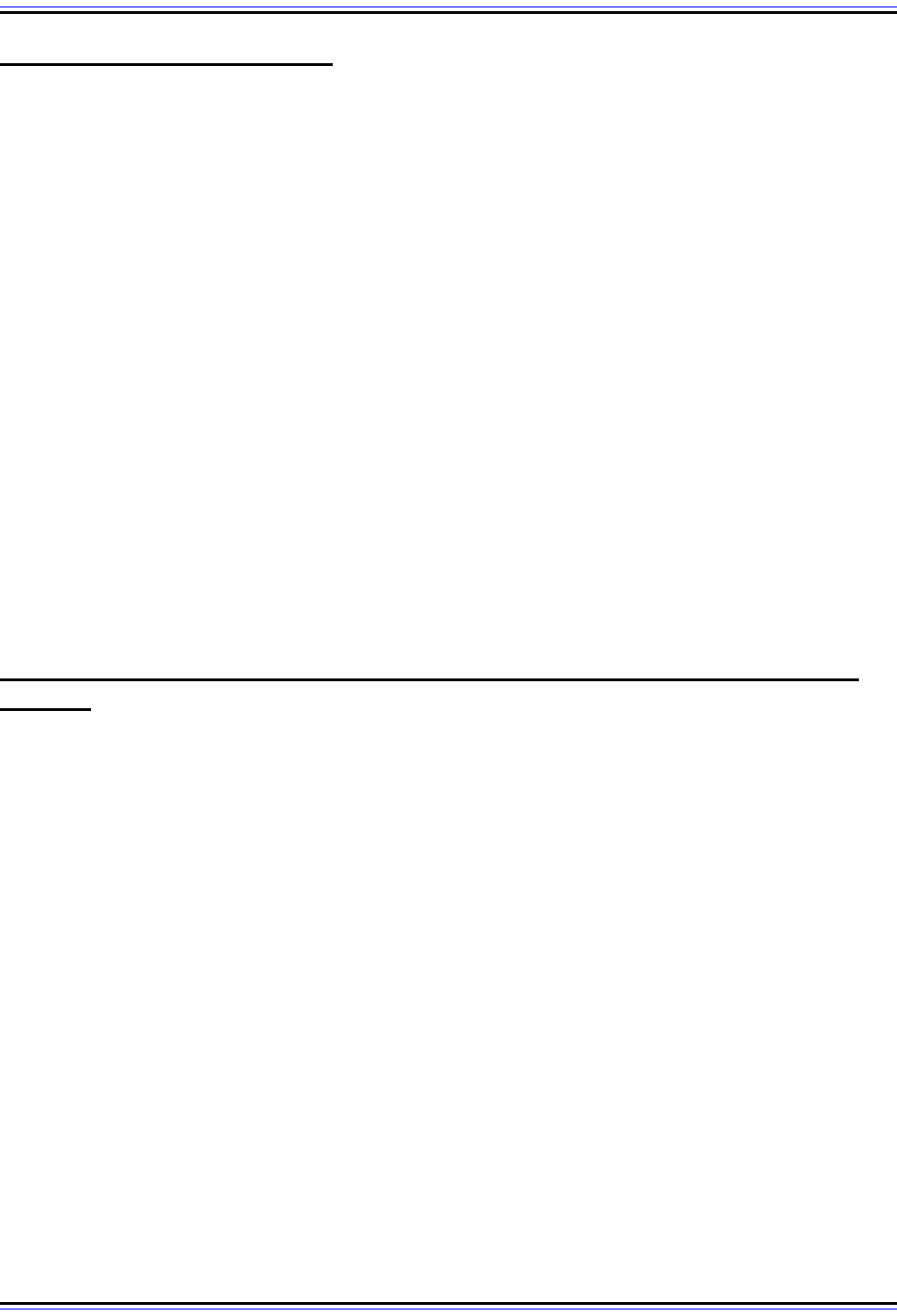
The TCP/IP Guide - Version 3.0 (Contents) ` 1242 _ © 2001-2005 Charles M. Kozierok. All Rights Reserved.
SNMP Protocol Operations
The Simple Network Management Protocol (SNMP) is the protocol responsible for allowing
network management stations on a TCP/IP internetwork to perform management tasks with
managed devices. The core of the protocol consists of a set of protocol operations that
allow management information to be exchanged between SNMP agents and managers.
Having previously examined the generalities of SNMP and what MIB objects are, we can
now get down to the “nitty gritty” of how management information is actually communicated
using SNMP. Yes, finally you get to actually see how SNMP “works”.
In this section I provide a detailed description of the operations performed by the SNMP
Protocol. I begin with a general description of how SNMP operates and the two basic
methods devices use to communicate; I also describe SNMP's message classes. I then
provide topics that describe in detail each of the basic operations performed in SNMP and
the messages used for those purposes: basic request/response, table traversal, object
modification, and notification. I conclude with a discussion of SNMP security issues and a
summary of the security methods in each of the SNMP versions.
Note that the number and types of protocol operations in SNMP changed between SNMPv1
and SNMPv2. The operations defined in SNMPv2 have been carried forward into the
newest version, SNMPv3. Most of the discussion focuses on SNMPv3 as the newest imple-
mentation, while mentioning what differences there are between it and the original and still
widely-used SNMPv1.
SNMP Protocol General Operation, Communication Methods and Message
Classes
The main function of the SNMP Protocol is to allow management information, in the form of
Management Information Base (MIB) objects, to be communicated between SNMP-capable
devices. The protocol operations of the SNMP Protocol are what describe how this commu-
nication is performed. Before looking at these operations individually in detail, it is
instructive to take an overall look at information exchange methods used in SNMP.
SNMP Communication Methods
For SNMP to be useful in enabling the management of a network, it must allow a network
administrator using a network management station (NMS) to easily check the status of
SNMP agents in managed devices. In data communications, there are two general
techniques that are used in a situation where one entity needs to be kept informed about
activity or occurrences on another:
☯ Poll-Driven: This term refers to the general technique of having the one who wants
the information ask for it; just like someone might conduct a political poll. In SNMP, the
NMS would poll SNMP agents for information. A common “real life” example of polling
is the model used by the regular mail service; every day you go to check your mailbox
to see if you have any mail.
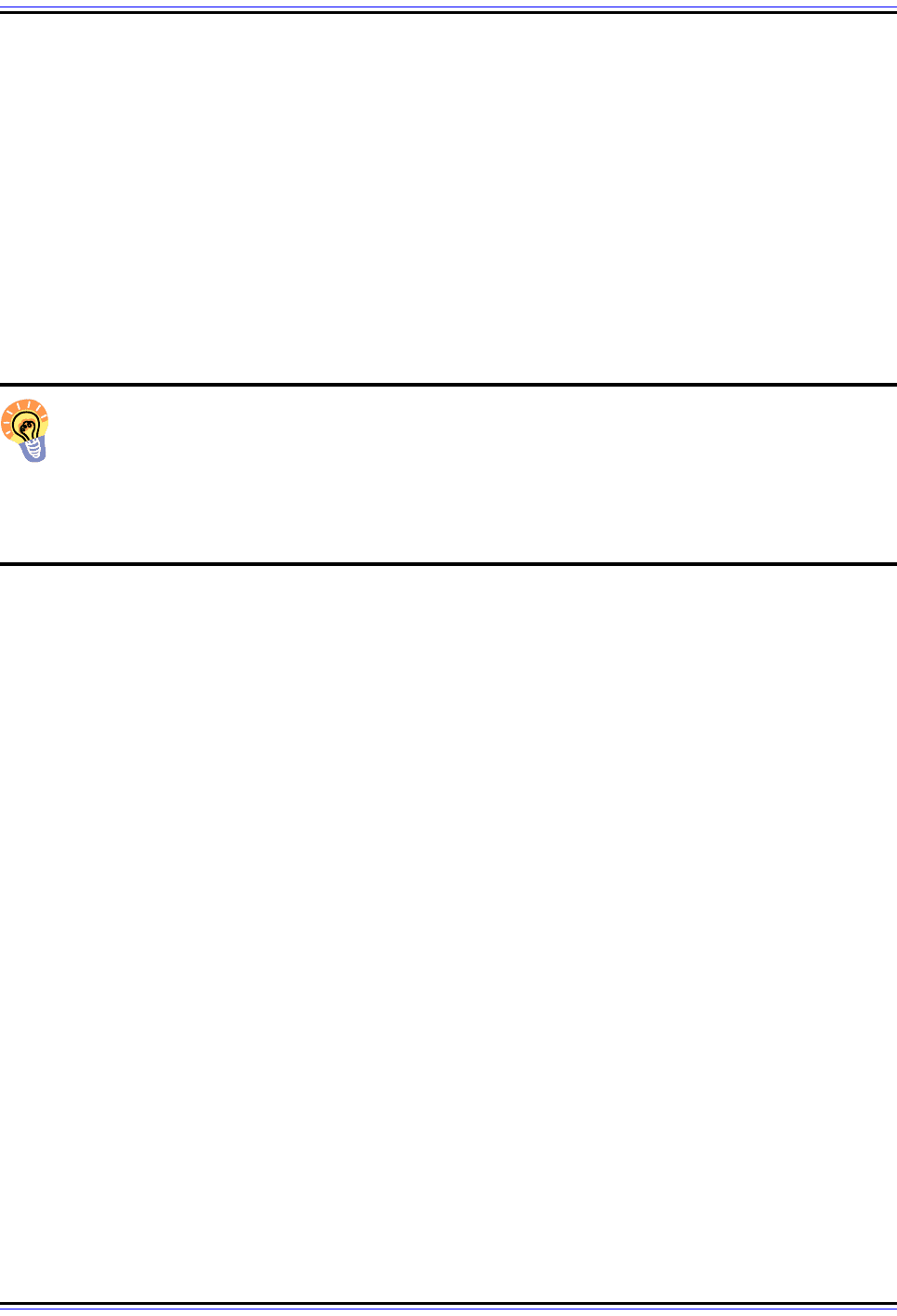
The TCP/IP Guide - Version 3.0 (Contents) ` 1243 _ © 2001-2005 Charles M. Kozierok. All Rights Reserved.
☯ Interrupt-Driven: This term refers to having a device with information that another
needs to know decide to send the information of its own “volition”. In SNMP, this would
refer to an SNMP agent sending information to an NMS without being asked. This is
the model used by that most famous of “interrupters”, the telephone.
Which is “better”? My quotation marks give me away again. The usual answer applies here:
neither is better nor worse universally, which is why both options exist. Due to the obvious
strengths and weaknesses of these models, The SNMP Protocol is designed to use both.
Polling is used for the periodic gathering of routine information, such as checking the usage
statistics and general status of a device. Interrupts are used in the form of traps that a
network administrator can set on a managed device. These traps cause an SNMP agent to
interrupt an NMS when an event of import occurs.
Key Concept: SNMP uses two basic methods for exchanging management infor-
mation. Routine communication uses a poll-driven technique, where the network
management station requests information from managed nodes. An interrupt-driven
model is also supported: in situations where a managed device needs to tell a management
station immediately about an occurrence, it can send a trap message without waiting for a
request from the management station.
SNMP Messages and Protocol Data Units (PDUs)
The actual communication of information in the SNMP Protocol is performed in a manner
similar to most other protocols, through the exchange of SNMP messages. These
messages are sometimes called protocol data units or PDUs. This is a term you may have
heard used in other protocols, and is also part of the formal definition of data encapsulation
in the OSI Reference Model. A message is, of course, a “data unit” used by the “protocol”.
SNMP messages all have “-PDU” at the ends of their names to identify them.
Some consider “protocol data unit” to be analogous to the military using “oblong metallic-
headed manually-operated fastener acceleration device” to refer to a hammer. To be fair
though, strictly speaking, in SMNP a PDU and a message are not exactly the same. The
PDU is the higher-layer data that SNMP encapsulates, as described by the OSI model. The
SNMP message format is a wrapper that encapsulates a PDU along with header fields, as I
describe in the section on SNMP messaging. However, the point of a message is to send a
PDU, so the two are “close enough”, and the terms are sometimes used interchangeably.
SNMP PDU Classes
SNMPv1 originally defined six PDUs. The number of PDUs was expanded and some
changes made to their name and use in SNMPv2 and SNMPv3. The current SNMP
Framework categorizes the PDUs into different classes. These classes describe both the
function of each message type and the kind of communication they use to perform their task
(polling versus interrupting).
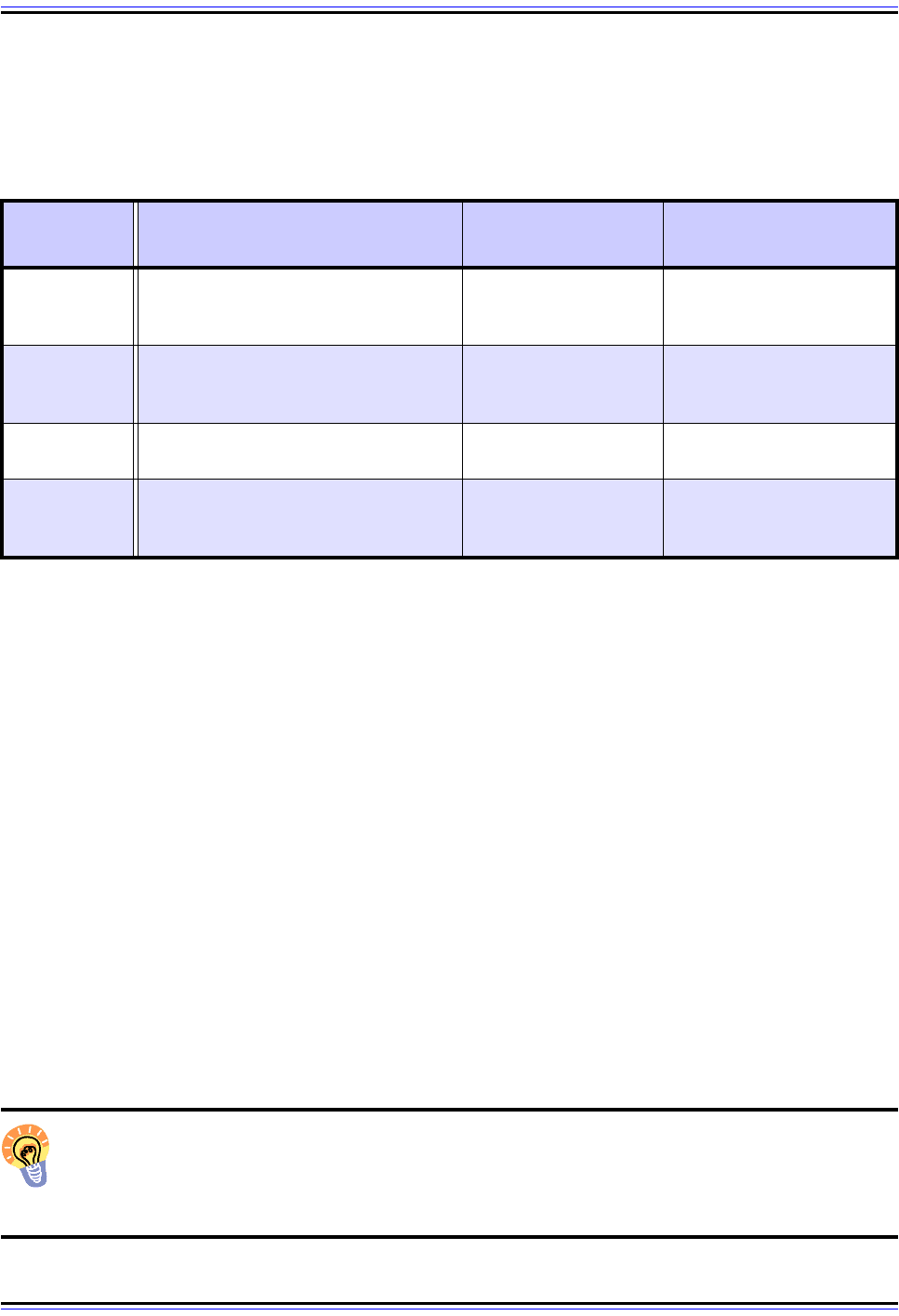
The TCP/IP Guide - Version 3.0 (Contents) ` 1244 _ © 2001-2005 Charles M. Kozierok. All Rights Reserved.
Table 211 shows the main SNMPv2/SNMPv3 PDU classes, describes them, and shows
which PDUs are in each class in SNMPv2/SNMPv3. These classes were not used in
SNMPv1 but for clarity I also show which messages from SNMPv1 fall into the classes
conceptually:
The GetBulkRequest-PDU and InformRequest-PDU messages are new in SNMPv2/v3.
The GetResponse-PDU message was renamed just Response-PDU (since it is in fact a
response and not a message that “gets” anything), and the new Trapv2-PDU replaces Trap-
PDU.
There are three other “special” classes defined by the current SNMP Framework that are of
less interest to us because they don't define actively-used messages, but which I should
mention for completeness. The Internal class contains a special message called Report-
PDU defined for internal SNMP communication. The SNMP standards also provide two
classes called Confirmed and Unconfirmed, used to categorize the messages in my table
above based on whether or not they are acknowledged. The Report-PDU, Trapv2-PDU,
and Response-PDU messages are considered Unconfirmed and the rest are Confirmed.
The next few topics will show how the major message types in the four main classes are
used. Note that in general terms, all protocol exchanges in SNMP are described in terms of
one SNMP entity sending messages to another. Most commonly, the entity sending
requests is an SNMP manager and the one responding an SNMP agent, except for traps,
which are sent by agents. For greater clarity, I try to use these more specific terms
(manager or agent) when possible, rather than just “entity”.
Key Concept: SNMP messages consist of a set of fields wrapped around a data
element called a protocol data unit or PDU. In some cases, the terms “message” and
“PDU” are used interchangeably, though they are technically not the same. SNMP
PDUs are arranged into classes based on their function.
Table 211: SNMP PDU (Message) Classes
SNMPv3
PDU Class
Description SNMPv1 PDUs
SNMPv2/SNMPv3
PDUs
Read
Messages that read management
information from a managed device
using a polling mechanism.
GetRequest-PDU,
GetNextRequest-PDU
GetRequest-PDU,
GetNextRequest-PDU,
GetBulkRequest-PDU
Write
Messages that change management
information on a managed device to
affect the device's operation.
SetRequest-PDU SetRequest-PDU
Response
Messages sent in response to a
previous request.
GetResponse-PDU Response-PDU
Notification
Messages used by a device to send
an interrupt-like notification to an
SNMP manager.
Trap-PDU
Trapv2-PDU,
InformRequest-PDU
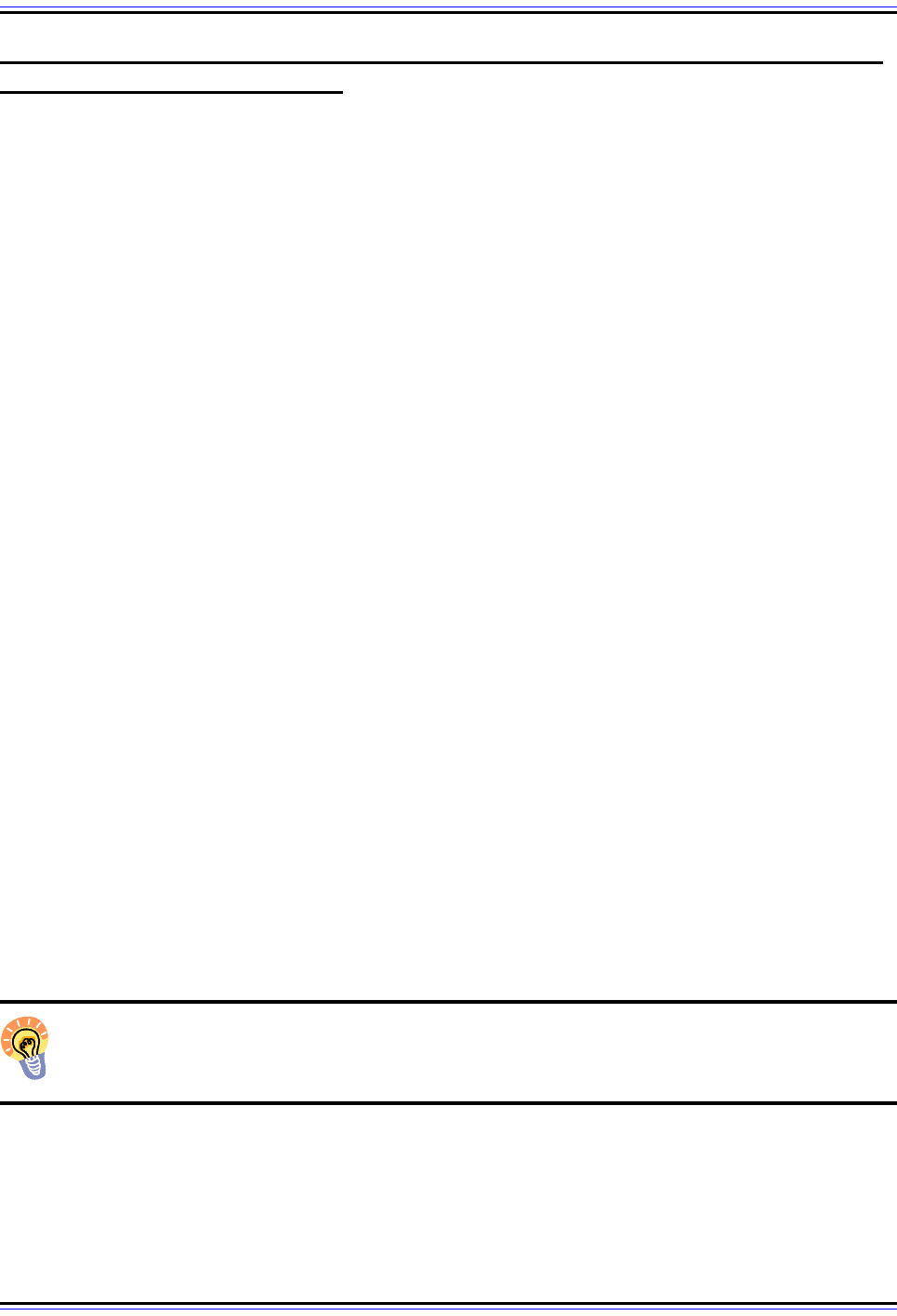
The TCP/IP Guide - Version 3.0 (Contents) ` 1245 _ © 2001-2005 Charles M. Kozierok. All Rights Reserved.
SNMP Protocol Basic Request/Response Information Poll Using GetRequest
and (Get)Response Messages
The obvious place to begin our detailed look at SNMP protocol operations is with the
simplest type of information exchange. This would be a simple poll operation to read one or
more management information variables, used by one SNMP entity (typically an SNMP
manager) to request or read information from another entity (normally an SNMP agent on a
managed device). SNMP implements this as a simple two-message request/response
protocol exchange, similar the request/reply processes found in so many TCP/IP protocols.
This information request process typically begins with the user of an application wanting to
check the status of a device or look at information about it. As we've seen, all this infor-
mation is stored on the device in the form of MIB objects. The communication, therefore,
takes the form of a request for particular MIB objects and a reply from the device containing
those objects' values. In simplified form, the steps in the process are as follows (and as
shown in Figure 274):
1. SNMP Manager Creates GetRequest-PDU: Based on the information required by the
application and user, the SNMP software on the network management station creates
a GetRequest-PDU message. It contains the names of the MIB objects whose values
the application wants to retrieve.
2. SNMP Manager Sends GetRequest-PDU: The SNMP manager sends the PDU to
the device that is being polled.
3. SNMP Agent Receives and Processes GetRequest-PDU: The SNMP agent
receives and processes the request. It looks at the list of MIB object names contained
in the message and checks to see if they are valid (ones the agent actually imple-
ments). It looks up the value of each variable that was correctly specified.
4. SNMP Agent Creates Response-PDU: The agent creates a Response-PDU to send
back to the SNMP Manager. This message contains the values of the MIB objects
requested and/or error codes to indicate any problems with the request, such as an
invalid object name.
5. SNMP Agent Sends Response-PDU: The agent sends the response back to the
SNMP Manager.
6. SNMP Manager Processes Response-PDU: The manager processes the infor-
mation in the Response-PDU received from the agent.
Key Concept: The most basic type of communication in SNMP is an information
poll, which allows a network management station to read one or more MIB objects
from a managed node using a simple request/reply message exchange.
The Response-PDU message is called GetResponse-PDU in SNMPv1. Presumably, this
name was chosen from the fact that it was a response to a get operation, to make the
names GetRequest-PDU and GetResponse-PDU somewhat symmetric. The problem is
that this name is confusing, for two reasons. First, it sounds to some people like the
purpose of the PDU is to “get a response”. Second, the GetResponse-PDU was also
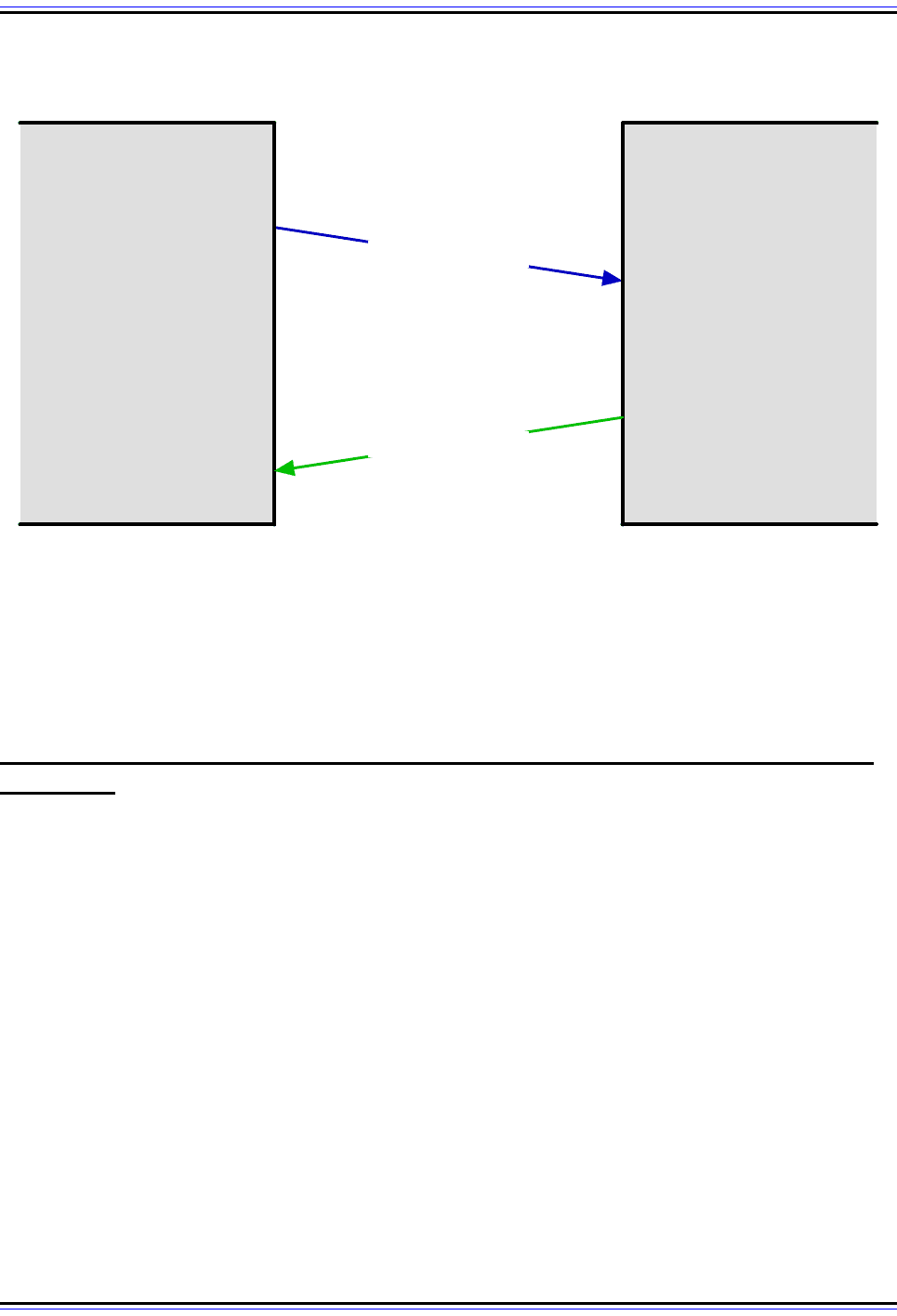
The TCP/IP Guide - Version 3.0 (Contents) ` 1246 _ © 2001-2005 Charles M. Kozierok. All Rights Reserved.
defined as the response message for operations other than “gets”, including the reply
message for SetRequest-PDU. Having a “GetResponse” message be sent in reply to a
“SetRequest” is disconcerting; the new name is more generic and avoids these problems.
SNMP Protocol Table Traversal Using GetNextRequest and GetBulkRequest
Messages
The GetRequest-PDU message we examined last topic is the one used by applications to
request values for regular, single variables in an SNMP managed object's management
information base. As I mentioned in the topic describing MIB objects, however, the Structure
of Management Information (SMI) also allows a management information base to contain
tabular data.
MIB tables are a useful way for a device to store and organize a set of related data items. It
would be rather inefficient to try to structure these items just as collections of regular
objects. For example, a device may have multiple IP addresses. It would be inefficient to
define one MIB object called ipAddr1, and another called ipAddr2, and so on to store IP
address information. Instead, an object called ipAddrTable is defined in the original
SNMPv1 MIB, which specifies a table containing one or more entries called ipAddrEntry.
Each entry contains the IP address and subnet mask for one of the interfaces of the device.
Figure 274: SNMP Information Poll Process
The basic SNMP information polling process involves a simple exchange of a GetRequest-PDU sent by an
SNMP manager and a Response-PDU returned by an SNMP agent.
SNMP Manager
GetRequest-PDU
1. Create
GetRequest-PDU Me ssa ge
3. Receive and Process
GetRequest-PDU Me ssa ge
4. Generate Response-PDU
Me ssa ge
SNMP Agent
5. Send Response-PDU
Me ssa ge
6. Process
Response-PDU Me ssa ge
2. Send
GetRequest-PDU Me ssa ge
Response-PDU
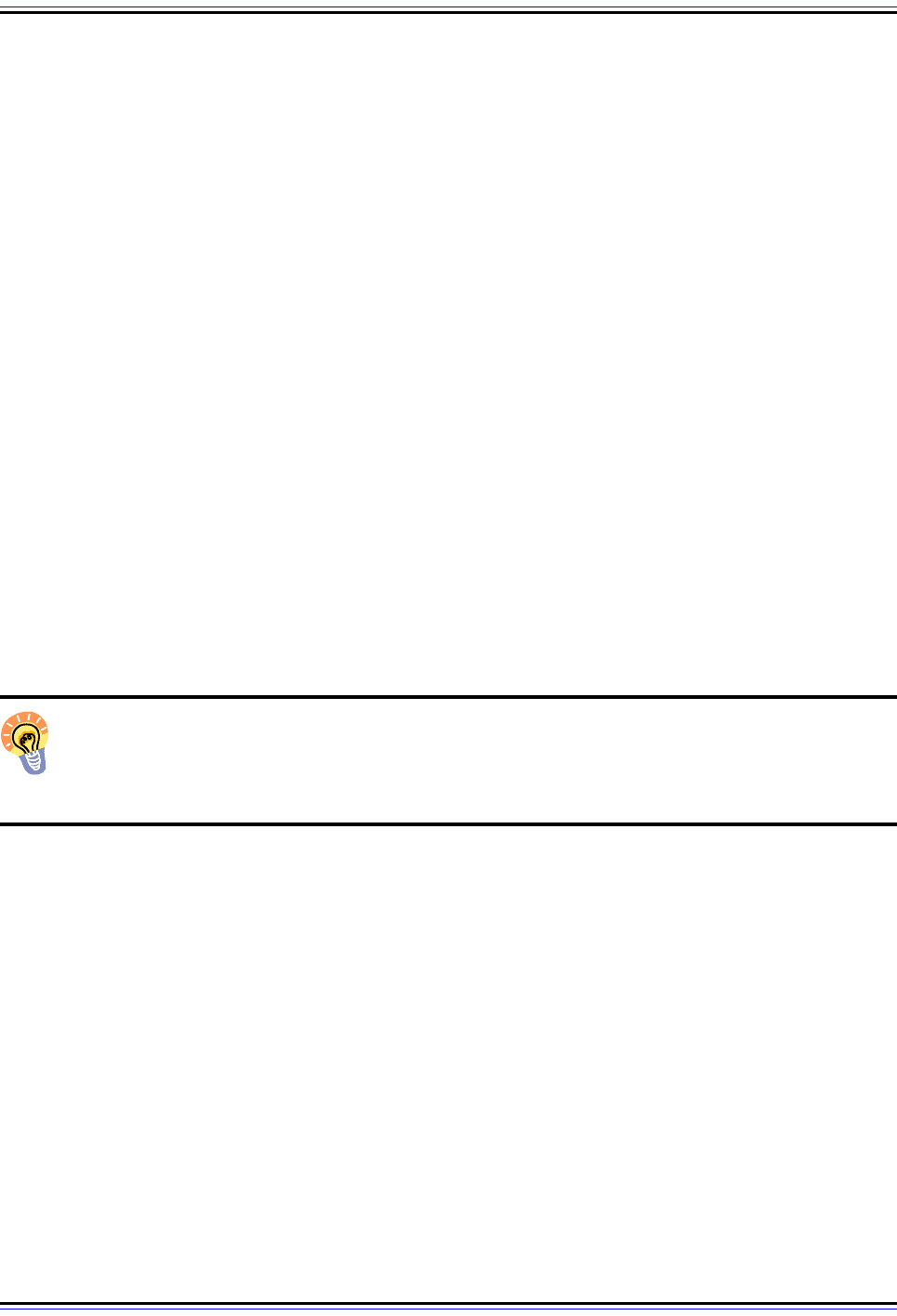
The TCP/IP Guide - Version 3.0 (Contents) ` 1247 _ © 2001-2005 Charles M. Kozierok. All Rights Reserved.
SNMPv1 Table Traversal Using GetNextRequest
There needs to be a way to let an SNMP manager may wish to read the contents of these
tables from a device. This can be done using the regular GetRequest-PDU message, by
specifying each entry in the table one after the other. However, this is somewhat crude, and
it leaves a problem: the SNMP manager may not know how many entries are in the table,
and therefore, how many entries it should request.
The problem of table traversal was addressed in SNMPv1 through the creation of a new
message type called GetNextRequest-PDU. You can think of this as a “relative” version of
the regular GetRequest-PDU. The GetNextRequest-PDU contains the name of a tabular
variable, as well as a particular entry in the table. The device receiving the GetNextRe-
quest-PDU uses this to look up the next value in the table and return it in a GetResponse-
PDU message.
The actual protocol exchange is about the same as that described in the previous topic: a
request is sent by the SNMP manager and a reply returned by the SNMP agent. The
difference is that instead of the SNMP agent returning the value for the variable specified, it
returns the value of the next variable in the table. This is then used as the value for the next
request, and so on, until the last entry in the table is reached. Once this happens and a
GetNextRequest-PDU is sent that contains this last entry, the responding device indicates
this by returning the MIB object that conceptually follows the table in the implementation of
the management information base. This signals to the SNMP manager that the table has
been fully traversed.
Key Concept: The SNMP GetNextRequest-PDU message allows a network
management station to request a series of consecutive variables in a management
information base. This is most commonly used to allow tabular data to be more easily
retrieved without requiring that each variable in the table be individually specified.
SNMPv2/v3 Table Traversal Using GetBulkRequest
The GetNextRequest-PDU message is functional, but while it is more elegant than using
regular GetRequest-PDU messages, it is not any more efficient—each entry in the table
must still be requested one at a time. This means that retrieving the information in a table
takes a long time, and also results in a great deal of traffic being generated due to the
number of requests and replies that must be sent.
To make table traversal easier and more conservative of network resources, SNMPv2 intro-
duced a new message type called GetBulkRequest-PDU. You can probably surmise the
idea here from the name. Instead of specifying a particular MIB object to get or to “get next”,
a GetBulkRequest-PDU allows an SNMP manager to send a single request that results in a
number of entries in a table being returned in a Response-PDU message.
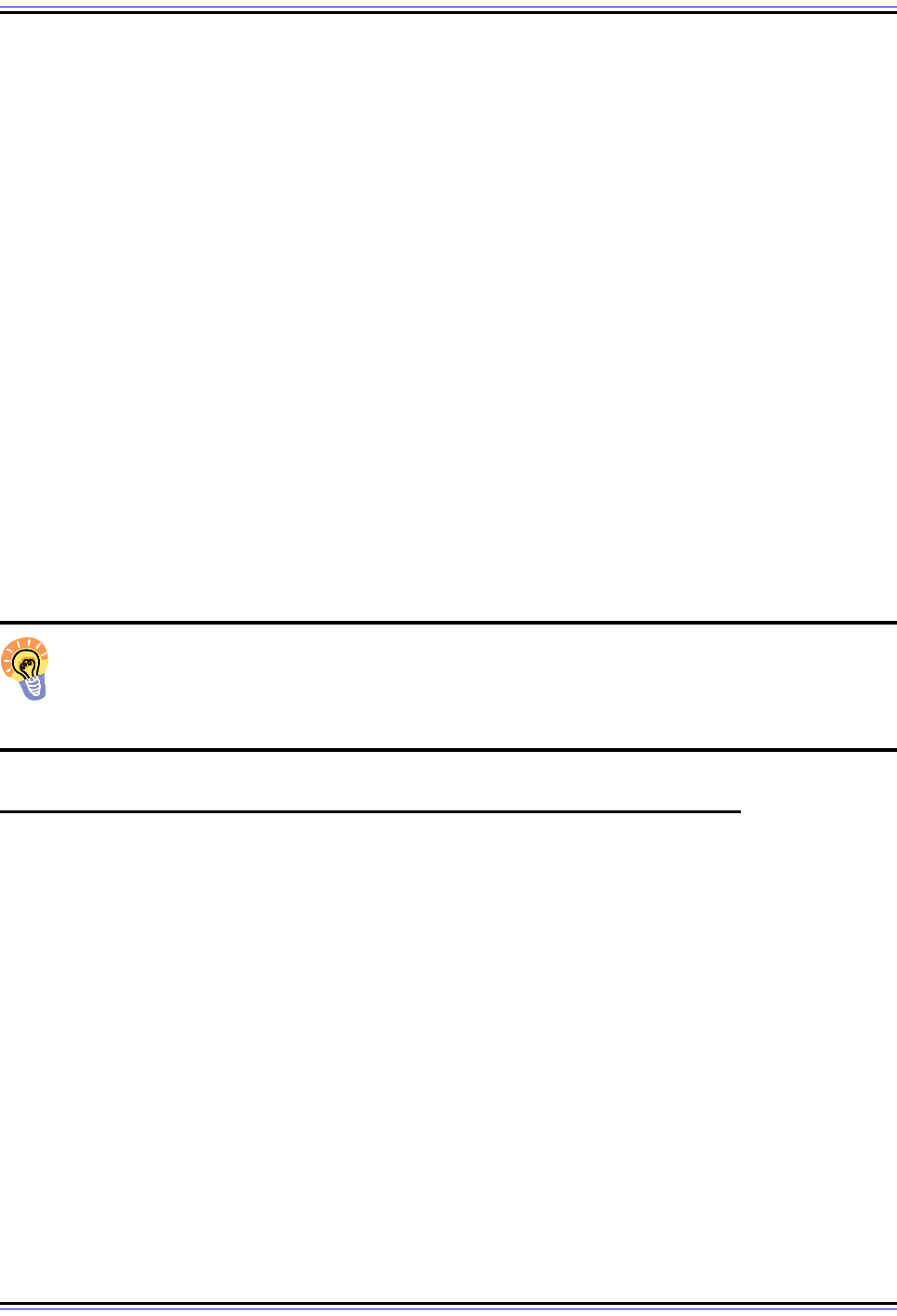
The TCP/IP Guide - Version 3.0 (Contents) ` 1248 _ © 2001-2005 Charles M. Kozierok. All Rights Reserved.
The GetBulkRequest-PDU is designed to allow both regular variable and tables to be
retrieved in a single request. The PDU includes a list of objects, just as in a GetRequest-
PDU or GetNextRequest-PDU. The list is organized so that regular objects appear first and
table objects come afterwards. Two special parameters are included in the request, called
Non Repeaters and Max Repetitions. The first of these specifies the number of non-
repeating, regular objects to be retrieved; this is the number of regular objects at the start of
the object list. The second specifies the number of iterations, or entries, to read for the
remaining tabular objects.
For example, suppose an SNMP manager wanted to request 4 regular variables and 3
entries from a table. The GetNextRequest-PDU would contain five MIB object specifica-
tions, with the table last. The Non Repeaters field would be set to 4, and the Max
Repetitions field set to 3.
The original method of traversing tables using GetRequest-PDU and GetNextRequest-PDU
from SNMPv1 was retained in SNMPv2 and SNMPv3 when they were developed. However,
the introduction of the more efficient GetBulkRequest-PDU means that GetNextRequest-
PDU is not as important as it was in SNMPv1. Bear in mind, however, that using
GetBulkRequest-PDU does require that the requesting entity know how many entries to ask
for. So, some “trial and error” or multiple requests may be required to get a whole table if the
number of entries is not known.
Key Concept: To improve the efficiency of table traversal, SNMPv2 introduced the
GetBulkRequest-PDU message, which allows a network management station to
request a sequence of MIB objects from a table using a single request to a managed
node.
SNMP Protocol Object Modification Using SetRequest Messages
The GetRequest-PDU, GetNextRequest-PDU, and GetBulkRequest-PDU messages are
the three members of the SNMP “Read” class of PDUs—they are used to let an SNMP
manager read MIB objects from an MIB agent. The opposite function is represented by the
SNMP “Write” class, which contains a single member: the SNMP SetRequest-PDU
message.
The use of this PDU is fairly obvious; where one of the three Get PDUs specifies a variable
whose value is to be retrieved, the SetRequest-PDU message contains a specification for
variables whose values are to be modified by the network administrator. Remember that
SNMP does not include specific commands to let a network administrator control a
managed device. This is in fact the “control method”, by setting variables that affect the
operation of the managed device.
The set process is the complement of the get process; the same basic idea, pretty much,
but a reversal in how the object values “travel” and what is done with them. The process
follows these steps (see Figure 275):
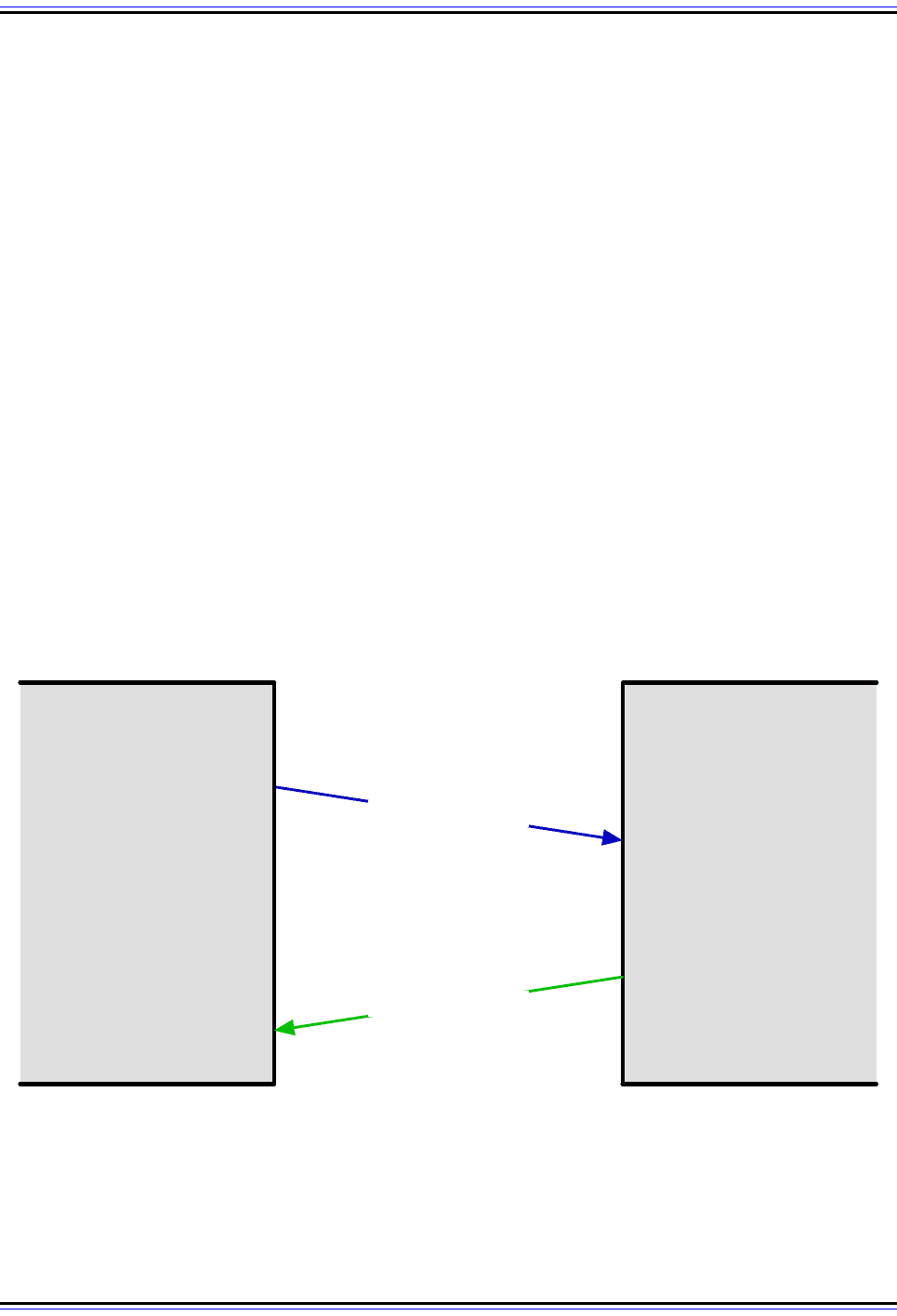
The TCP/IP Guide - Version 3.0 (Contents) ` 1249 _ © 2001-2005 Charles M. Kozierok. All Rights Reserved.
1. SNMP Manager Creates SetRequest-PDU: Based on the information changes
specified by the user through the SNMP application, the SNMP software on the
network management station creates a SetRequest-PDU message. It contains a set of
MIB object names and the values to which they are to be set.
2. SNMP Manager Sends SetRequest-PDU: The SNMP manager sends the PDU to the
device being controlled.
3. SNMP Agent Receives and Processes SetRequest-PDU: The SNMP agent
receives and processes the set request. It examines each object in the request along
with the value to which the object is to be set, and determines if the request should or
should not be honored.
4. SNMP Agent Makes Changes and Creates Response-PDU: Assuming that the
information in the request was correct (and any security provisions have been
satisfied), the SNMP agent makes changes to its internal variables. The agent creates
a Response-PDU to send back to the SNMP Manager, which either indicates that the
request succeeded, or contains error codes to indicate any problems with the request
found during processing.
5. SNMP Agent Sends Response-PDU: The agent sends the response back to the
SNMP Manager.
6. SNMP Manager Processes Response-PDU: The manager processes the infor-
mation in the Response-PDU to see the results of the set.
Figure 275: SNMP Object Modification Process
The communication process for setting a MIB object value is very similar to that used for reading one. The
main difference is that, of course, the object values are sent from the SNMP Manager to the SNMP Agent,
carried in the SetRequest-PDU message.
SNMP Manager
SetRequest-PDU
1. Create
SetRequest-PDU M e ssa ge
3. Receive and Process
SetRequest-PDU Me ssa ge
4. Make Changes, Create
Response-PDU Me ssa ge
SNMP Agent
5. Send Response-PDU
Me ssa ge
6. Process
Response-PDU Me ssa ge
2. Send
SetRequest-PDU M e ssa ge
Response-PDU
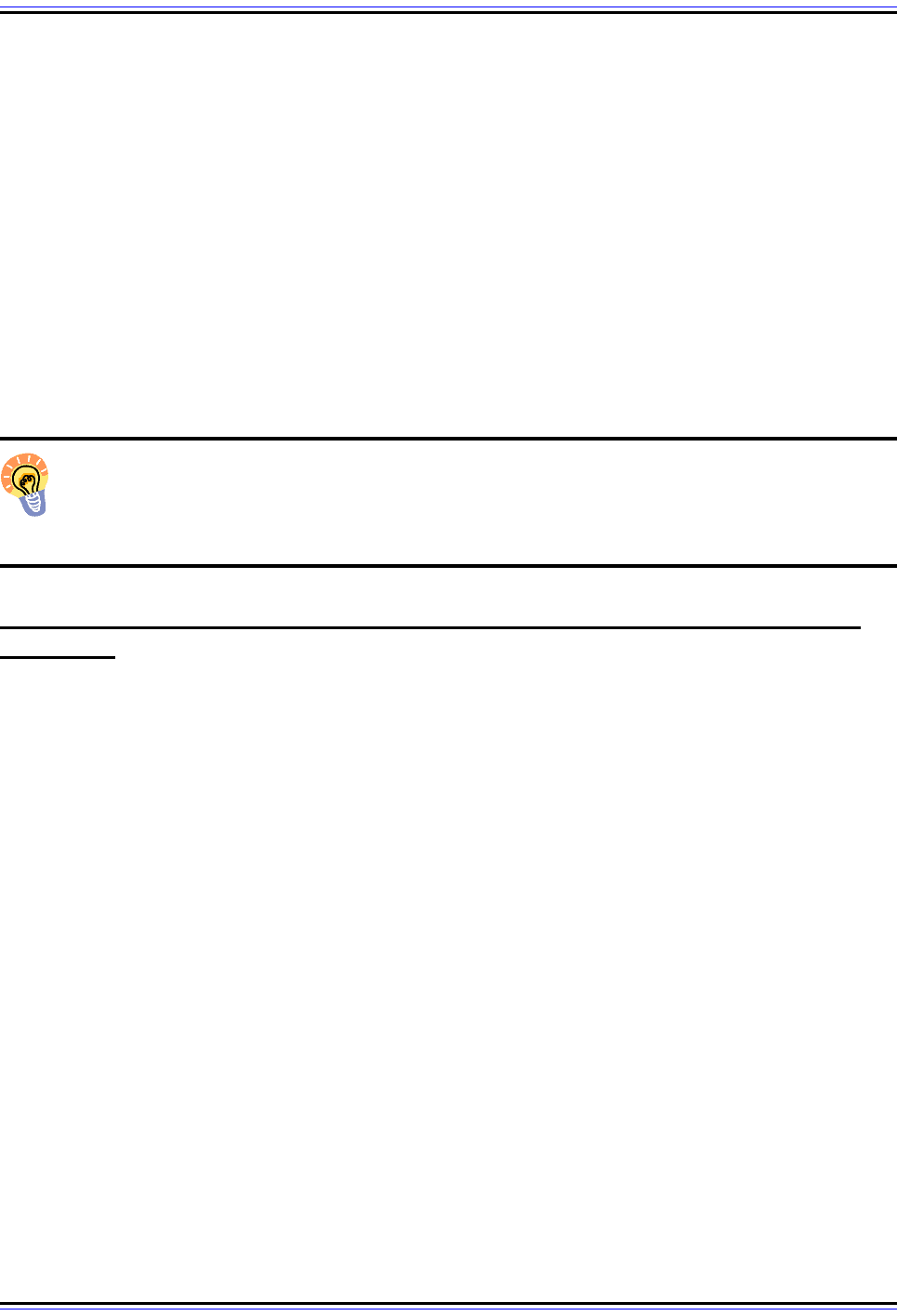
The TCP/IP Guide - Version 3.0 (Contents) ` 1250 _ © 2001-2005 Charles M. Kozierok. All Rights Reserved.
Verification of Object Modification Requests
Obviously, telling a device to change a variable's value is a more significant request than
just asking the device to read the value. For this reason, the managed device must very
carefully analyze and verify the information in the request to ensure that the request is valid.
The checks performed include:
☯ Verifying the names of the objects to be changed.
☯ Verifying that the objects are allowed to be modified (based on their Access or Max-
Access object characteristic.)
☯ Checking the value included in the request to ensure that its type and size are valid for
the object to be changed.
This is also a place where general protocol security issues become more important.
Key Concept: SNMP network management stations control the operation of
managed devices by changing MIB objects on those devices. This is done using the
SetRequest-PDU message, which specifies the objects to be modified and their
values.
SNMP Protocol Information Notification Using Trap(v2) and InformRequest
Messages
The first topic in this section introduced the two basic methods of communicating infor-
mation between SNMP devices: using polls or interrupts. All of the message types and
exchanges we have examined thus far in this section have been poll-driven: they consist of
an SNMP manager making a specific request that results in action being taken, and a
response being generated by an SNMP agent.
The Need for Traps in SNMP
Polling is ideal for the exchange of routine information that needs to be gathered on a
regular basis. For example, the regular Get requests could be used to verify the settings on
a device, examine error counts over a period of time, or check its up-time or use statistics.
And obviously, polling is the only real method for performing a Set operation, where data is
changed.
But polling is not well-suited for important information that needs to be communicated
quickly. The reason is that poll-driven communication is always initiated by the recipient of
the information: the SNMP manager. If something significant occurs on a managed device
that the manager wasn't expecting, the manager won't find out about it unless it specifically
asks to see the variable that has changed. This means that important variables would need
to be checked all the time by the SNMP manager, which is highly efficient.
